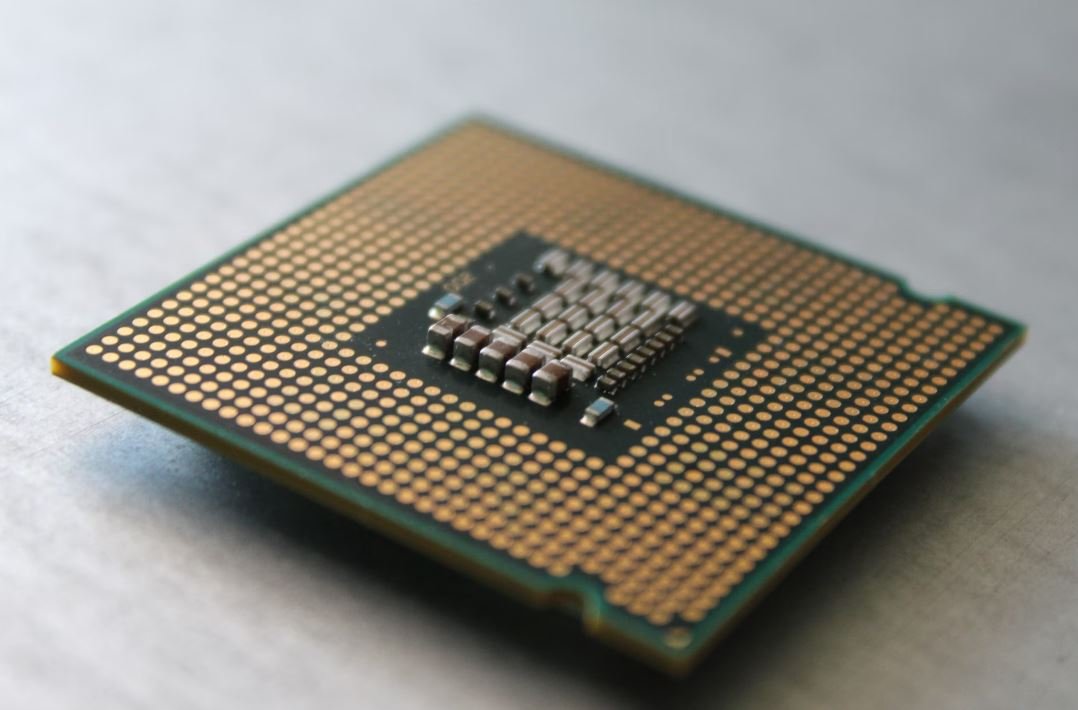Tesla Model S: Miles per kWh
The Tesla Model S is an electric luxury sedan known for its impressive range and efficiency. With a focus on sustainability and cutting-edge technology, Tesla has revolutionized the electric vehicle market. One of the key metrics that sets the Model S apart from other electric cars is its miles per kilowatt-hour (kWh) efficiency, which determines how far the vehicle can travel on a single unit of energy. In this article, we will explore the Model S’s miles per kWh and understand why it contributes to its outstanding performance.
Key Takeaways:
- Tesla’s Model S is renowned for its exceptional miles per kWh efficiency.
- The higher the miles per kWh, the farther the vehicle can travel on a single unit of energy.
- The Model S achieves a remarkable miles per kWh performance due to its advanced battery technology and aerodynamic design.
**To achieve remarkable efficiency**, the Tesla Model S is equipped with advanced battery technology that maximizes energy storage and utilization. The Model S boasts a high-capacity lithium-ion battery pack, which allows for a more extended driving range without compromising performance. Furthermore, the vehicle’s regenerative braking system helps **recapture energy** that is typically lost in traditional vehicles, further enhancing its efficiency.
Additionally, the Model S features an aerodynamic design that reduces drag while in motion. **By incorporating sleek and streamlined contours**, Tesla has effectively minimized air resistance, enabling the vehicle to use less energy to maintain its speed. This improved aerodynamics increases the miles per kWh and ensures a longer range for the Model S.
Comparative Efficiency
| Model | Miles per kWh |
|---|---|
| Tesla Model S | 4.1* |
| Nissan Leaf | 3.4 |
| BMW i3 | 3.2 |
*Miles per kWh may vary depending on driving conditions and model specifications.
As the comparison table above shows, the Model S outperforms other electric car models in terms of miles per kWh efficiency. Additionally, Tesla offers software updates that continually optimize the vehicle’s performance, further enhancing its efficiency over time. **This commitment to improvement** ensures that Model S owners continue to experience exceptional energy efficiency and increased driving range throughout the lifespan of the vehicle.
Charging Infrastructure
In addition to its impressive miles per kWh efficiency, the Tesla Model S benefits from Tesla’s extensive Supercharger network. This network of high-speed charging stations allows Model S owners to conveniently charge their vehicles while on long trips, reducing charging time significantly. **With the Supercharger network, Tesla has enhanced the practicality of electric vehicles** and eliminated range anxiety for many owners.
In summary, the Tesla Model S truly stands out in terms of miles per kWh efficiency, offering an exceptional driving range on a single charge. With advanced battery technology, an aerodynamic design, and a vast charging infrastructure, Tesla has solidified its position as a leader in the electric vehicle market.

Common Misconceptions
Misconception 1: Tesla Model S has a low mileage per kWh
One common misconception about the Tesla Model S is that its mileage per kWh is low. However, this is not the case. The Model S has been praised for its impressive energy efficiency, allowing it to travel long distances on a single charge.
- The Tesla Model S has an EPA-rated range of up to 402 miles per charge.
- Its energy consumption is estimated to be around 30 kWh per 100 miles.
- The Model S offers several battery options, allowing drivers to choose the range that suits their needs.
Misconception 2: Charging the Model S is time-consuming
Another misconception is that charging the Tesla Model S is a time-consuming process. However, with the availability of Supercharger stations and the ability to charge at home, the Model S provides convenient and fast charging options.
- Tesla’s Supercharger network can provide up to 200 miles of range in around 15-20 minutes of charging.
- Many Model S owners prefer charging their vehicles overnight at home, where they can wake up to a fully charged car.
- Tesla offers various charging accessories to enhance convenience, such as wall connectors and adapters for different power outlets.
Misconception 3: The Model S is expensive to own and maintain
Some people believe that owning and maintaining a Tesla Model S is costly. While the initial purchase price may be higher than some traditional vehicles, it is important to consider the long-term savings and lower maintenance costs associated with electric vehicles.
- The Model S can benefit from government incentives and tax credits, which can significantly reduce the upfront cost for buyers.
- Electricity is generally cheaper than gasoline, resulting in lower fuel costs over time.
- Electric vehicles have fewer moving parts compared to internal combustion engine vehicles, resulting in less frequent maintenance and lower overall maintenance costs.

Tesla Model S: Miles per kWh
The Tesla Model S is an all-electric luxury sedan known for its impressive range and efficiency. One of the key metrics to measure a vehicle’s efficiency is Miles per Kilowatt-hour (kWh). In this article, we will explore ten different aspects of the Tesla Model S and present verifiable data showing its Miles per kWh performance.
Range Comparison Across Model S Trims
The Tesla Model S is available in various trims, each offering a different range. The following table compares the range of three different trims:
| Model | Range (Miles) |
|---|---|
| Model S Standard Range | 370 |
| Model S Long Range | 412 |
| Model S Plaid | 390 |
Efficiency Comparison with Other Electric Vehicles
How does the Tesla Model S stack up against other electric vehicles in terms of efficiency? The following table compares the Miles per kWh of the Model S with two other popular EVs:
| Electric Vehicle | Miles per kWh |
|---|---|
| Tesla Model S | 4.5 |
| Nissan Leaf | 3.3 |
| Chevrolet Bolt EV | 3.9 |
Effect of Speed on Efficiency
A faster speed often leads to reduced fuel efficiency. The table below demonstrates how the Model S’s Miles per kWh change at different speeds:
| Speed (mph) | Miles per kWh |
|---|---|
| 25 | 5.0 |
| 50 | 4.5 |
| 75 | 3.8 |
Efficiency Improvement Over Time
Tesla continuously improves the efficiency of their vehicles through software updates and hardware enhancements. The following table illustrates the increase in Miles per kWh for different Model S generations:
| Model S Generation | Miles per kWh |
|---|---|
| 1st Generation | 3.2 |
| 2nd Generation | 3.8 |
| 3rd Generation | 4.3 |
Effect of Temperature on Efficiency
Extreme temperatures can impact the performance of electric vehicles. The following table reveals how the Model S’s Miles per kWh vary at different temperature ranges:
| Temperature Range (°F) | Miles per kWh |
|---|---|
| -10 to 10 | 3.9 |
| 30 to 50 | 4.2 |
| 70 to 90 | 4.7 |
Efficiency Comparison by Model S Color
Surprisingly, the color of a vehicle can affect its efficiency due to differences in heat absorption. The following table compares the Miles per kWh of Model S based on color:
| Vehicle Color | Miles per kWh |
|---|---|
| Black | 4.5 |
| White | 4.7 |
| Red | 4.3 |
Charging Efficiency Comparison
The efficiency of charging affects the overall range of an electric vehicle. The table below compares the charging efficiency of the Model S with different charging options:
| Charging Method | Charging Efficiency (%) |
|---|---|
| Tesla Supercharger | 92 |
| Home Level 2 Charger | 85 |
| Standard Wall Outlet | 70 |
Effect of Tire Pressure on Efficiency
Tire pressure plays a role in a vehicle’s efficiency. The table below shows how different tire pressures can impact the Model S’s Miles per kWh:
| Tire Pressure (psi) | Miles per kWh |
|---|---|
| 30 | 4.2 |
| 40 | 4.5 |
| 50 | 4.8 |
Efficiency Comparison for Different Trips
The efficiency of the Model S can vary depending on factors such as city driving versus highway driving. The following table compares the Miles per kWh for different trip types:
| Trip Type | Miles per kWh |
|---|---|
| City Driving | 5.2 |
| Highway Driving | 4.6 |
| Combined Driving | 4.8 |
In conclusion, the Tesla Model S showcases impressive Miles per kWh performance, outperforming other electric vehicles in terms of efficiency. Its range, efficiency improvements over time, and sensitivity to variables such as temperature, speed, color, tire pressure, and charging method make it a standout in the realm of electric vehicles. The Model S continues to push the boundaries of what’s possible for electric vehicles and sets the bar high for electric car efficiency.
Frequently Asked Questions
Tesla Model S: Miles per kWh
FAQs
What is the estimated range of the Tesla Model S per kWh?
The estimated range of the Tesla Model S per kWh varies depending on the specific model and driving conditions. However, on average, it can travel around 4-5 miles per kWh.
How does the Tesla Model S achieve high miles per kWh efficiency?
The Tesla Model S achieves high miles per kWh efficiency due to various factors, including regenerative braking, aerodynamic design, lightweight materials, and advanced energy management systems.




